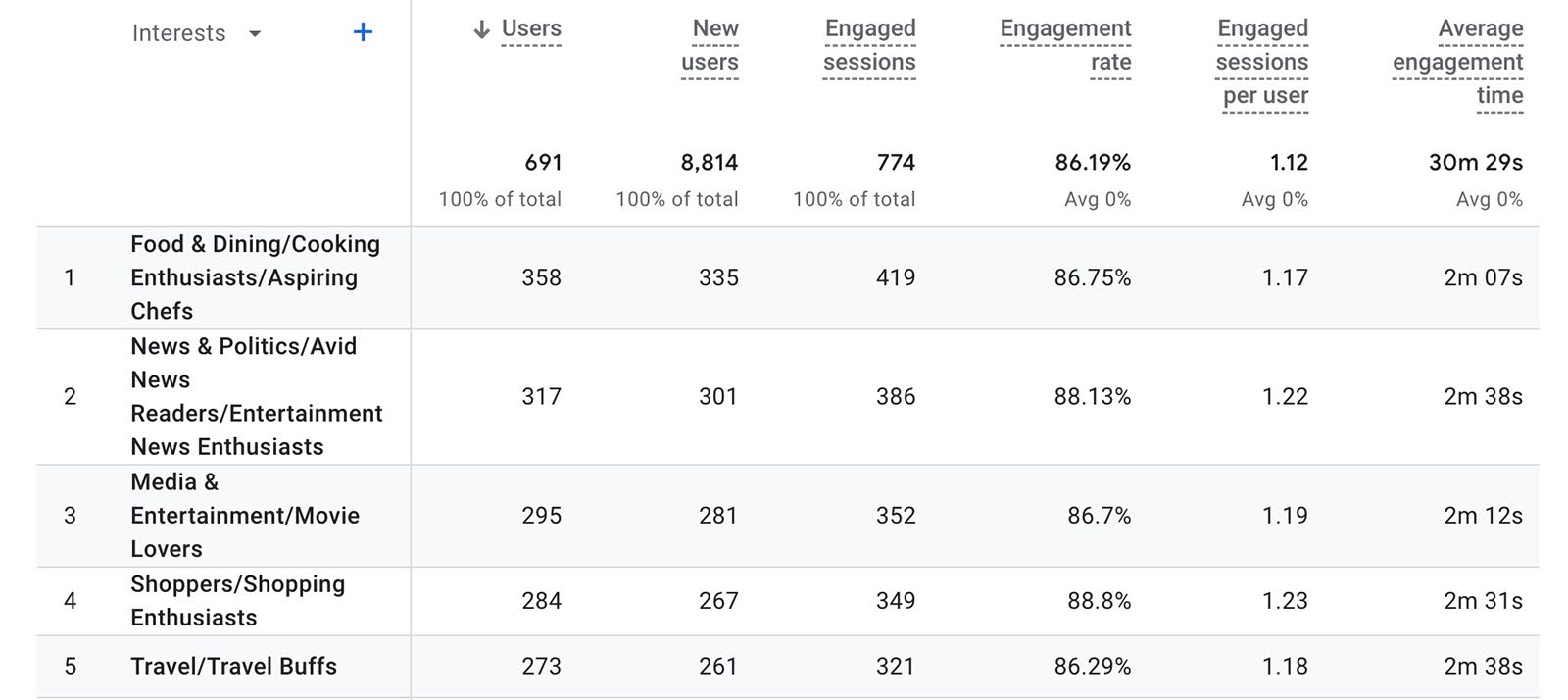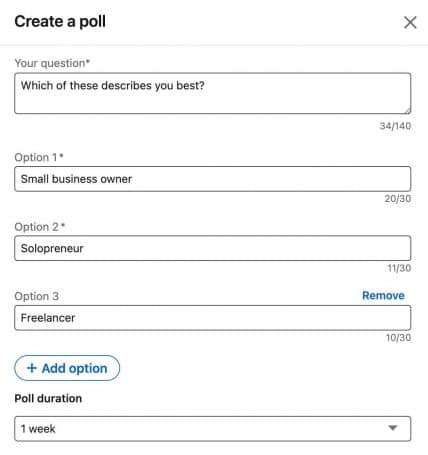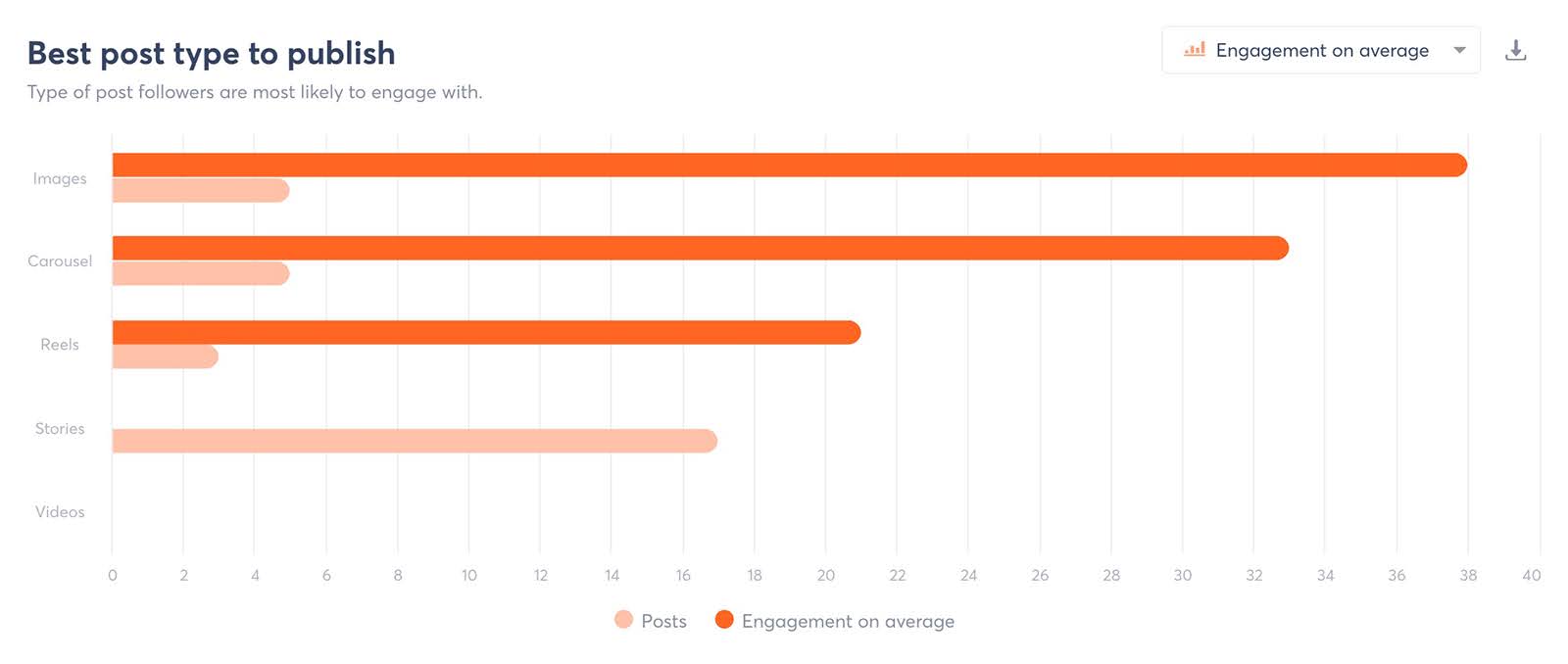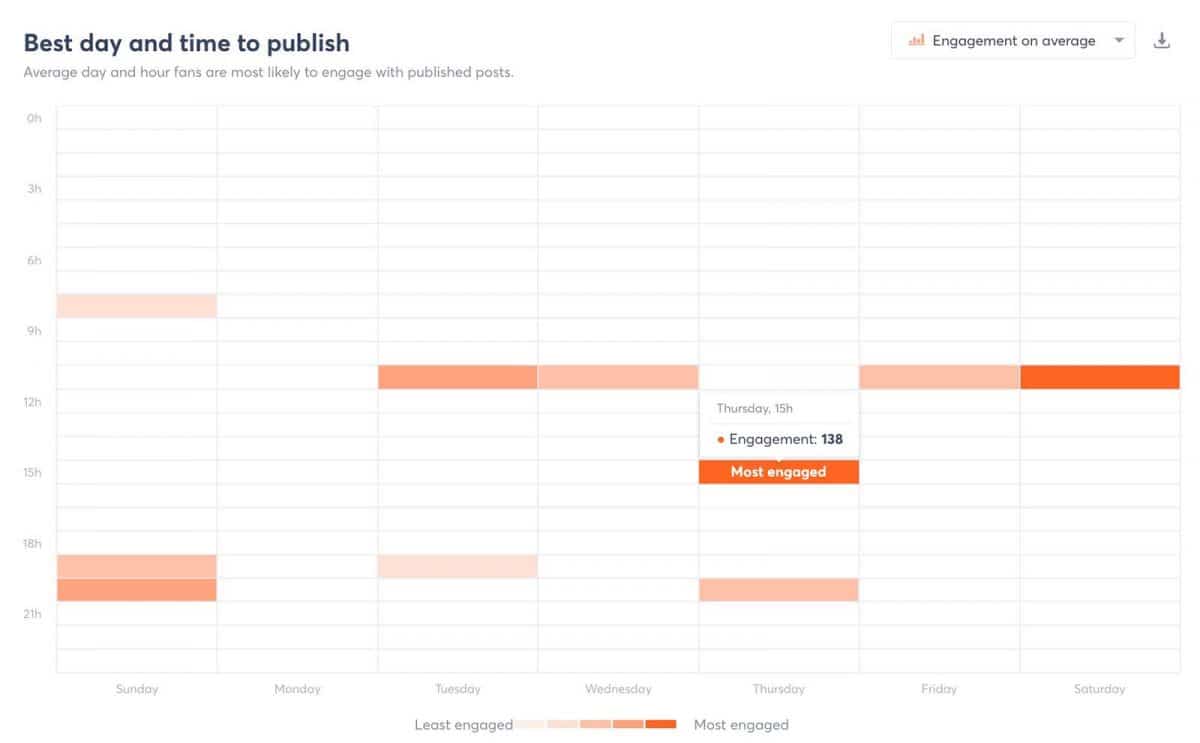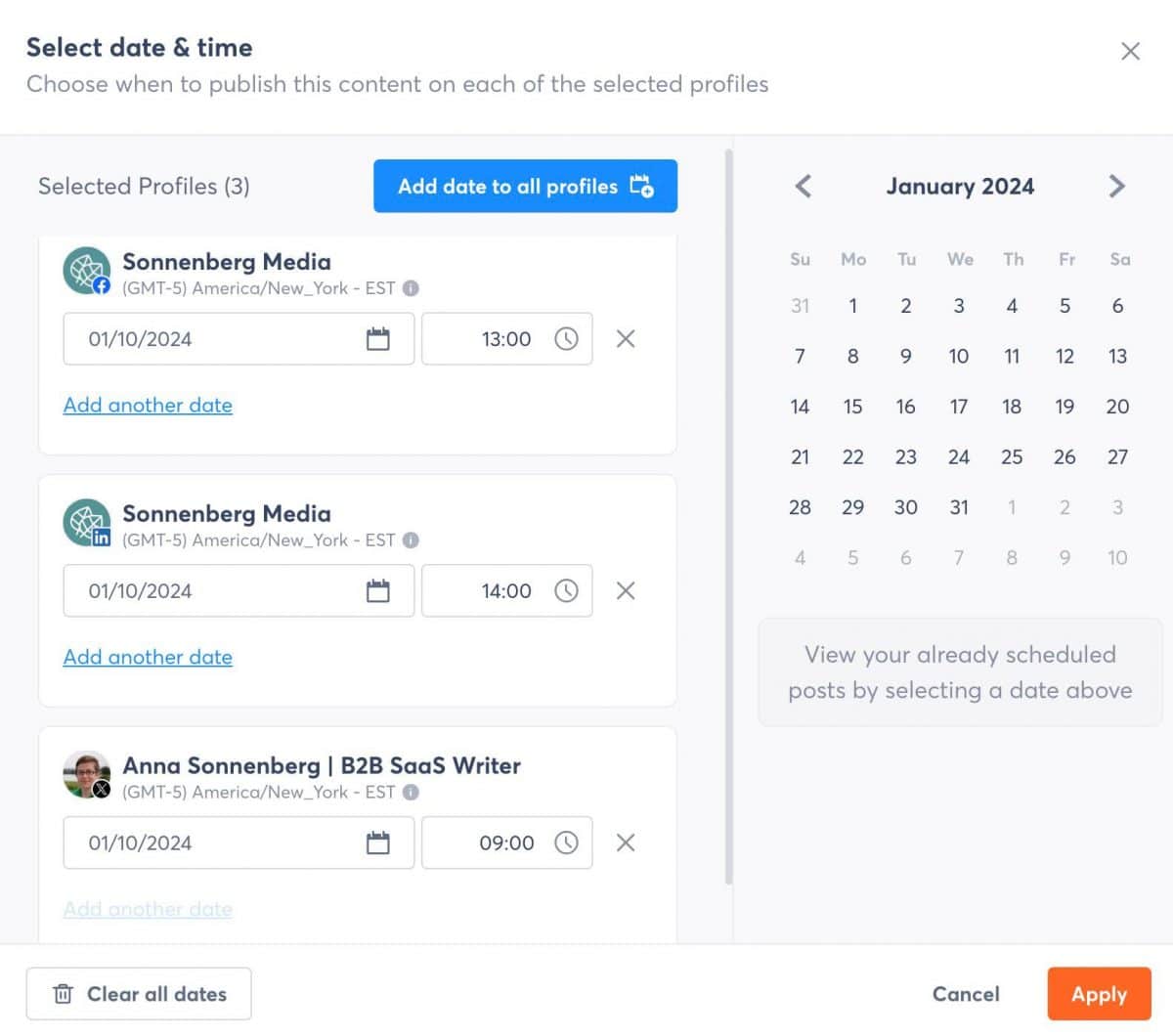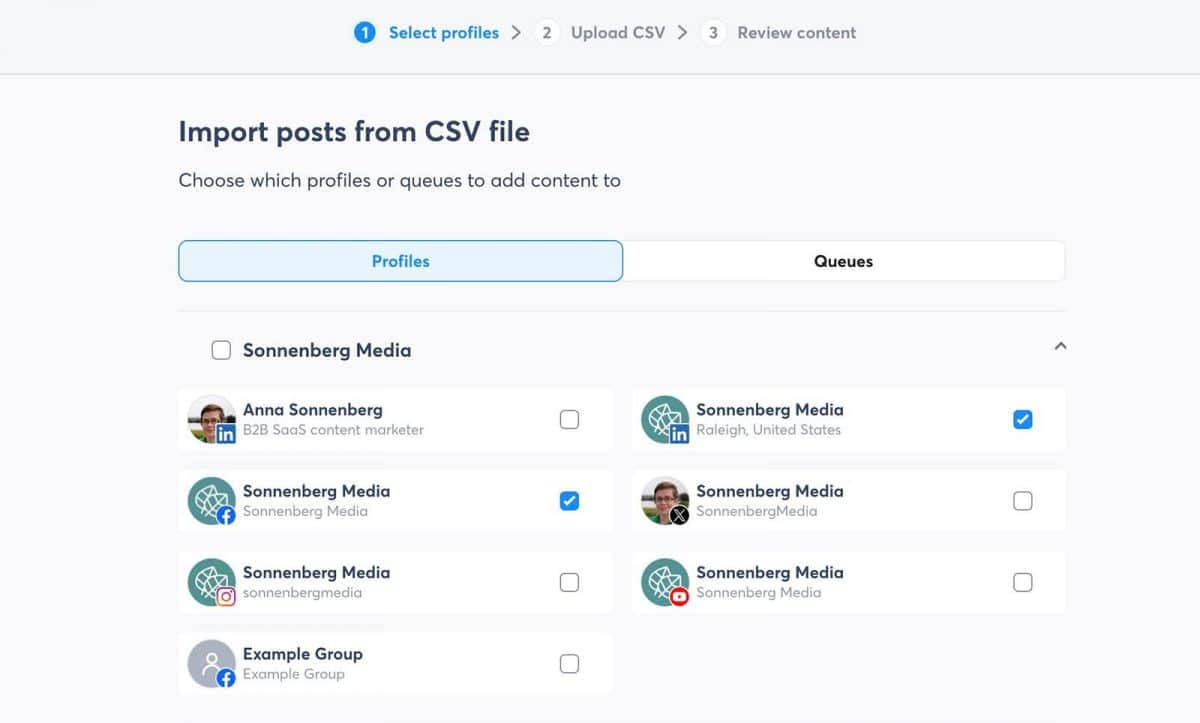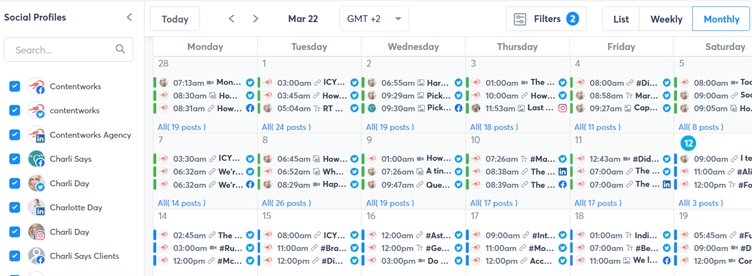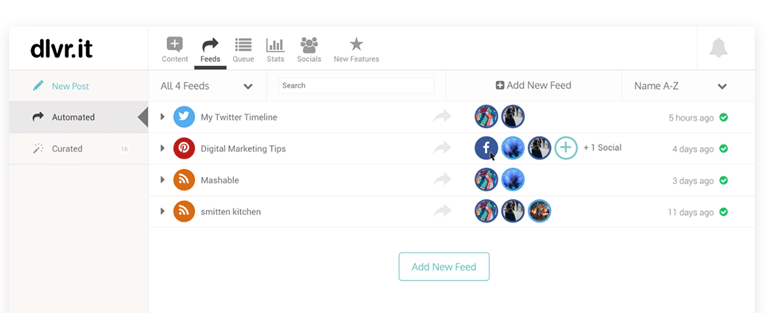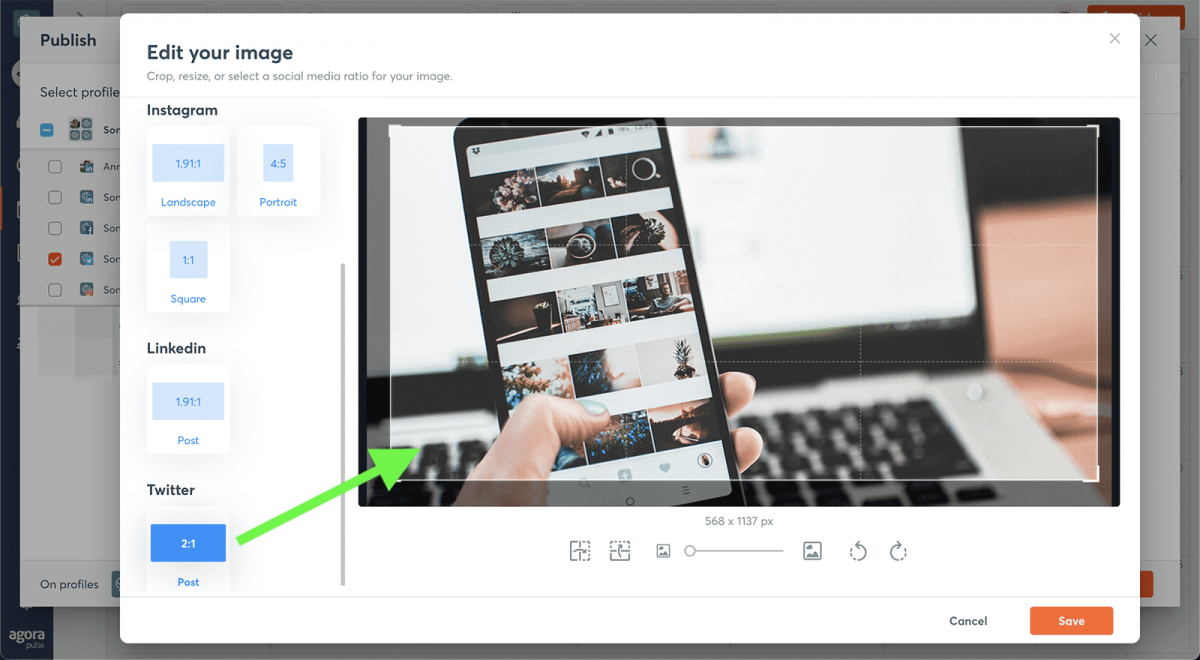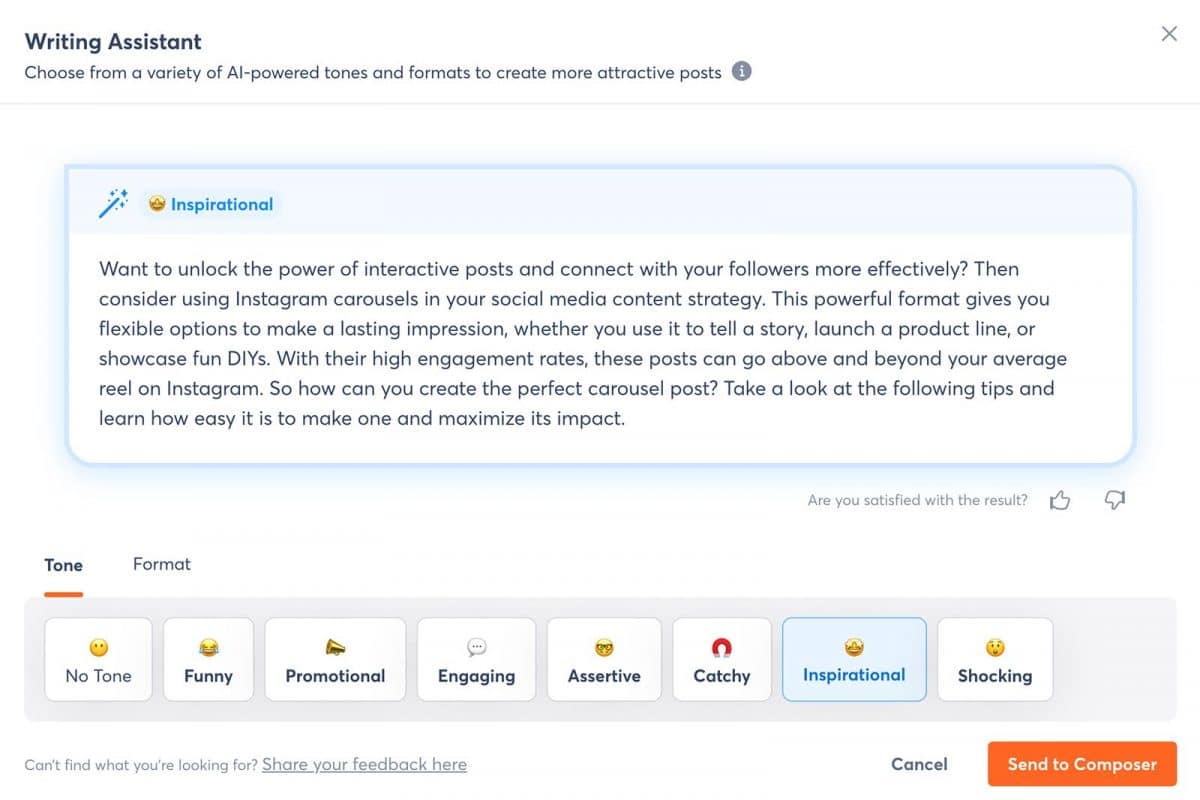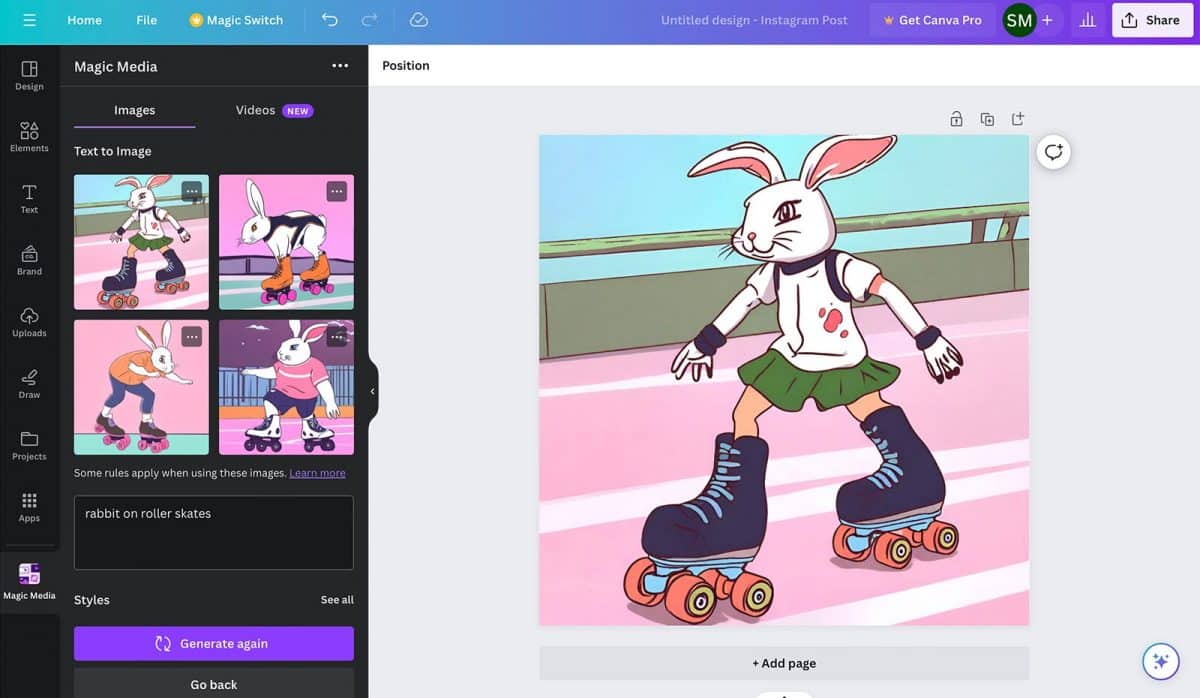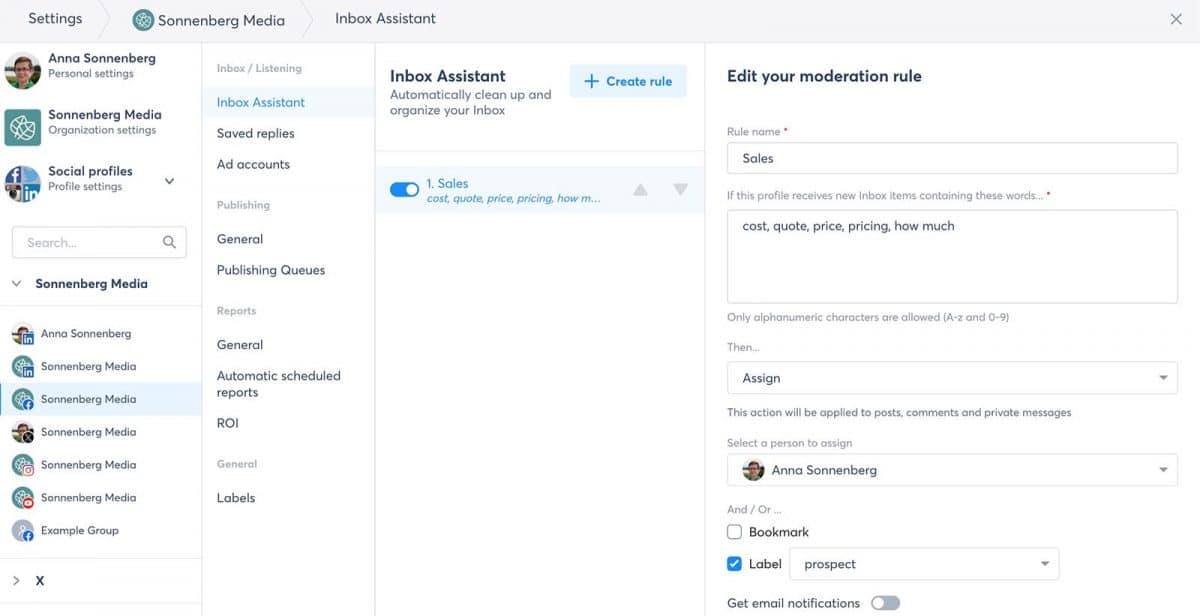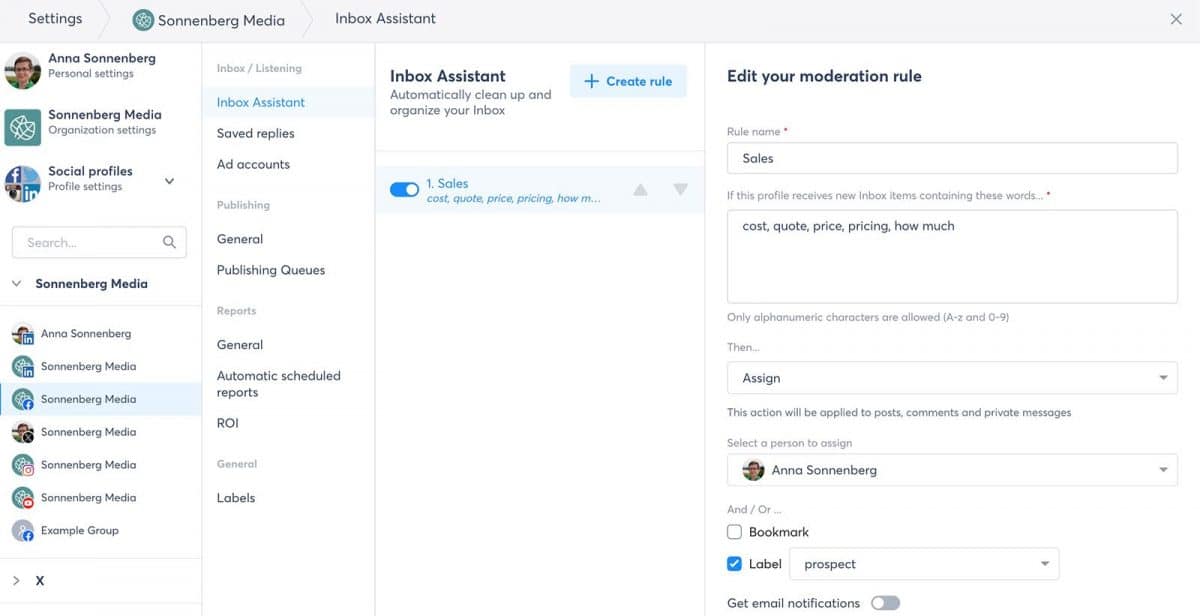Before social media, brands needed to engage the services of a publisher to share their news. Today, brands are in the hot seat, and social media publishing is at their fingertips. But most just quickly create content and then post without a plan, or worse, without a way to measure their efforts.
First, let’s take a look at what the true definition of social media publishing is.
What Is Social Media Publishing?
Social media publishing is the process of strategizing, planning, creating, scheduling, and distributing your social media content across a variety of social media platforms, forums, and blogging sites.
In this article, I’m going to share different types of social media publishing and the best ways to streamline and simplify your workflow.
The idea of distributing content in all directions and capturing multiple audience demographics is highly appealing. But it doesn’t just happen by hitting a button.
How to Get More Out of Your Social Media Publishing
So how can you get more out of your social media strategy without adding to your workload? With smart social media management tips, you can accomplish more in less time and achieve the results your team (or your agency clients) want to see.
Let’s look at how you can publish smarter, from scheduling to social listening.
1. Identify the right platforms for your brand
Whether you’re managing social media for your company or you’re handling strategy for a handful of clients, you’ll want to be choosy about where you post. You might feel pressure to build a presence on every available social media site. But don’t let FOMO (fear of missing out) compromise your marketing strategy.
Rather than defaulting to publishing on the biggest platforms, find the right channels for your brand.
Do market research to learn where your audience spends time, and find where you can forge the most meaningful connections. Consider your social media goals. Take time to understand how each platform can drive website traffic, generate sales, or help you meet other objectives.
Not sure how to get started with market research? Use these tips for learning more about your audience.
Pew Research Center
This site has lots of current info about social media usage trends. If you’re starting from scratch or rethinking your approach, you’ll want to check here.
For example, say your company already has a product line geared toward customers aged 30 to 49. You’re already successfully using Facebook and YouTube to reach these customers. However, say your company is adding a new product line for customers aged 18 to 29. According to Pew Research Center data, focusing on TikTok and Instagram would be smart.
Google Analytics
If your website receives a decent amount of traffic, you can learn a lot about your audience. Check Google Analytics to discover audience demographics, interests, and device usage.
Google Analytics 4 reports reveal the age ranges of your site visitors, the cities or regions where they live, and even the kinds of content that interest them.
With Google Analytics, you can also see which channels are already driving traffic to your website. For example, are you seeing a lot of traffic from Facebook even though you don’t have a presence there yet? It could be worth prioritizing this social network going forward.
Customer Surveys
If you’re curious about what your audience wants or how you can reach them most effectively, just ask. Consider sending a poll to your email list to get the scoop directly from your customers.
Many social media networks also have built-in poll features. For example, you could ask your LinkedIn followers to identify with a particular persona or to choose a preferred topic or format.
You could also use YouTube or Instagram polls to ask followers which other networks they use. For example, you may learn that your audience would prefer to see your content on TikTok.
2. Set social media goals for your posts
On that note: What are your team’s social media goals anyway?
If you haven’t set any yet, you’ll inevitably spend a lot of time producing social media content that gets you exactly nowhere.
Deciding on social media goals takes a little time upfront. But once you create objectives for your team, you’ll be able to use your time more efficiently.
Use this quick guide to set SMART goals for your team:
- Specific: Really zero in on your goal to clarify what you want to achieve and why.
- Measurable: Make sure you can quantify your goals.
- Achievable: Choose objectives that are ambitious but within the realm of possibility.
- Relevant: Opt for goals that relate to larger brand or marketing objectives.
- Time-Based: Pick goals that have a time frame, such as this month or this quarter.
One of the biggest benefits of the SMART goal framework is that it can help you avoid focusing on vanity metrics or outcomes that don’t truly move the needle.
For example, say your main marketing objective is lowering customer acquisition cost. Attracting more followers isn’t likely to help, so audience growth probably shouldn’t be a key goal.
Here’s a realistic example of setting a SMART goal for social media:
Increase clicks from Facebook and LinkedIn by 2x within the first half of next year. Assuming the current conversion rate of 10% continues to hold, this additional traffic will lead to 2x conversions. As a result, we’ll double our marketing qualified leads, which will help the sales team build the pipeline they need to meet revenue goals.
Sign up for a FREE trial of Agorapulse right now!
3. Plan your social media content
Your content planning needs a calendar (ideally one that allows you to input actual posts). Doing so allows you to plan for the different types of content to include. That could be trending days, new products, company announcements, or curated content.
A social media calendar also allows you to plan out the accompanying designs, videos, and GIFs that will make your content pop. Ideally, you will publish different content for each channel tailored to the demographic of the audience there.
Most brands we work with at Contentworks Agency were copying and pasting the same content to Instagram, Facebook, Twitter, LinkedIn, and anywhere else they could think of. That’s why we devise a multi-channel strategy to differentiate content on each channel and maximize audience reach.
As an example:
- Blog–Long-form content that explains your products, answers FAQs, shares news and inspires readers. Will have options on it to promote social sharing.
- Email–Integrate your emails with your social media channels to drive engagement and increase fans. You can do this by collating your most popular posts in an email and linking to them. This can all be part of your social media publishing strategy.
- PR–If you’re publishing PRs on other sites you will want to maximize their value by sharing them on your channels. But choose which channels to share them on.
- Facebook–Shares blog content, special offers, and events
- Twitter–Pumps out relevant sector news, polls, and hashtag trends
- TikTok–Shares fun, non-salesy short videos about funny problems or company culture
- LinkedIn–Can share the previously mentioned TikToks as well as job opportunities, corporate social responsibility, and company news.
- Instagram–Requires great images and photos, so if you’re publishing together with Facebook remember to include them. Captions can be much longer and include more hashtags.
- YouTube–Videos can be embedded in your company blog or shared to social media to increase their reach
4. Optimize your social media content strategy
Being a successful social media manager doesn’t mean spending your workday posting content. If your strategy centers on publishing posts daily or when they come to mind, you might be wasting tons of time.
A content calendar and a scheduling strategy can save you time and stress.
Creating a content calendar can also help your team keep their eyes on the prize: your social media goals.
Follow these simple steps to draft your content calendar:
- Pencil in major campaigns and seasonal promotions, allowing plenty of time to tease content before the actual event.
- Add in links to content your team wants to promote, such as new blog posts.
- Get the calendar draft approved by your marketing manager to ensure you’ve covered all the bases.
- Develop creative assets, including photos, graphics, and videos.
- Decide which social channels to publish on and create unique copy for each.
Curious how to create a simple tech stack for your content calendar and social media needs? There are tons of options to choose from, but I prefer using Airtable and Agorapulse.
In Airtable, I use the calendar view to pencil in marketing campaigns and promotional events. My team has access to this calendar, so they can easily add ideas and clarify priorities.
I typically draft copy and add creative mockups to Airtable records. Then I input the drafts into Agorapulse, where I can preview, customize, and schedule the posts for each social network.
Can’t decide between images, videos, stories, or text posts? Use Agorapulse’s Best post type to publish report. It compares engagement and reach for different post types so you can see what resonates with your audience—and publish more of what works.
5. Know when to publish on social media
You could publish social media content at any time. However, you’re likely to get better results if you post when your audience is online and engaged. After all, organic reach on social media has been declining for many years. With so many other brands competing for attention, it’s more important than ever to post content at the optimal time.
So when should you publish content?
You can get a general idea from these guidelines for the best time to post on social media. For example, posting in the late morning or at midday is a good place to start. However, the right time is different for every brand, since it largely depends on your audience.
Here’s how to find the best time to post:
- Navigate to Agorapulse Reports and click on the Global Content tab.
- Scroll down to the Best day and time to publish chart.
- Toggle between Engagement on average and Reached users to use the criteria that matter most to your team.
- Look for the red-orange time slots, which are the optimal times to post.
When you schedule social media content, plug these optimal times into Agorapulse’s publishing composer. Since you can schedule content to publish at specific times for each social network, you can ensure that you’re reaching each target audience at the right time.
Remember to check the Best day and time to publish chart regularly. The more you experiment with timing, the more data it can display—and the better your recommendations will be.
Sign up for a FREE trial of Agorapulse right now!
6. Upload weeks’ worth of content at once
After creating a content calendar, aim to schedule posts at a rate that works for your company. Again, the best posting frequency for your brand depends on a few factors, such as your industry, your goals, and the size of your account.
Although your mileage may vary, it’s still helpful to follow general guidelines like these:
- Facebook: At least once a week and up to once a day.
- Instagram: At least once a week and up to twice a day.
- LinkedIn: Between a couple of times per week and once per business day.
- TikTok: At least once and up to a few times per day.
- X (Twitter): Anywhere from a few to 30 times per day.
- YouTube: About once a week.
Upload posts for a week at a time, or schedule a month in advance.
Planning a big social campaign for next season? Try bulk publishing to schedule all your posts at once.
With Agorapulse, you can upload dozens of posts in a few minutes, saving your team tons of time.
Here’s how:
- Navigate to your Agorapulse content library and go to the Drafts tab.
- Click the orange Create New button and select Bulk Import from the dropdown menu.
- Choose one or more social profiles where you want to publish the content.
- Bulk upload content via a CSV file using the formatting detailed in the workflow.
- Review the posts and edit as necessary.
Note that you must add scheduled dates and times. But all other data is optional. To save time, I recommend adding social media captions, URLs, image or video links, and publishing labels to the CSV file prior to uploading. Then you’ll be able to schedule content as efficiently as possible.
7. Utilize social media publishing tools
Some social media platforms offer native tools for scheduling content. Native tools can be fine for small businesses that only have one Facebook profile and one LinkedIn page. But sitting and manually publishing each post to multiple platforms and accounts often isn’t an option. That is especially true for large companies, marketing agencies, and freelancers with numerous accounts. The time taken just to log into each platform would be immense.
Instead, you need a social media publishing tool that can handle multiple posts, social media channels, and accounts. Agorapulse allows you to easily select a social media platform, time, and date, and add images and videos.
You can also choose additional publishing tools like DLVR (an RSS syndication tool). This will pump out content from any site with an RSS feed onto your social media channels. Due to the fast nature of the posts, it’s better suited to fast moving timelines like Twitter. This is not your content, so be sure that you trust the site and its content before you add a feed.
8. Include user-generated content
Dlvr is a form of UGC (user-generated content). It is content that you shared but didn’t create. There are pros and cons to including other people’s content in your strategy. The biggest benefit is that social campaigns that incorporate UGC see a 50% lift in engagement.
I usually do include UGC, but I make sure it isn’t a direct competitor or someone with a record of putting out controversial content.
In practical terms, UGC on your platforms can be a retweet, clipped post, a quote from an influencer, or a photo you’re tagged in and reshare.
Chances are your brand has some pretty creative followers who post about their experiences with your products or services. Why not reshare their images or videos (giving the original creator full credit of course)?
When you republish UGC, you get some great benefits:
- You can forge a connection with fans and customers by showing your appreciation and amplifying their content.
- UGC adds a sense of authenticity, which can really resonate with customers. In fact, 90% of people trust UGC when making purchasing decisions.
- Your team can spend less time and money creating original content since you simply have to find and reshare existing content instead.
So how can you find UGC efficiently? The easiest way to identify UGC is to watch your mentions. Check story mentions and tags on Instagram, TikTok, and any other social network where your brand is active.
Since Agorapulse automatically tracks brand mentions, it’s particularly helpful for finding UGC. In fact, I typically review my clients’ mentions daily and bookmark posts I plan to reshare.
If a customer tagged your brand in an engaging story, sharing the UGC is easy. All you have to do is tap to add the story to your own story. Then you can add your own copy or stickers to make the share more engaging.
But if you want to republish the UGC from your profile, make sure to get permission from the original creator first. When you repost, take care to tag the original creator to give them full credit for the content.
9. Establish a consistent publishing schedule
Nothing alienates social media fans faster than an erratic posting schedule.
My pet peeve is a brand that posts nothing for a week and then floods my feeds with hundreds of posts. I have other interests you know!
By utilizing a social media publishing tool like Agorapulse, you can spread out your content, alternate between different types of material, and also see when your fans are online to fine tune the publishing. This will be different for each sector and platform.
For example, our Contentworks Agency Facebook page has the most fan activity at 9 AM and 11 PM on Mondays and 5 PM on Tuesdays. So, we publish the content then. It’s so simple. And with Agorapulse, I can schedule, queue, and repeat my content. So, a post on Monday at 9 AM can be repeated for the transatlantic 11 PM crowd. And with a scheduling tool like Agorapulse, you can schedule posts for any time zone!
10. Curate great content for your audience
Why create all your own content? Curate posts from partners and thought leaders to start conversations.
With smarter sourcing strategies, you can save time and resources. In some cases, you can also reduce your content creation budget dramatically. After all, producing video, photo, and design content can be costly. Resharing curated content tends to cost significantly less.
If you already have a reading list or a blog roll that’s relevant to your audience, this process is incredibly easy. All you have to do is pick the best reading material from your list and add it to your calendar.
Not sure what kind of content to curate?
Here are a few tools to curate content:
- BuzzSumo: This tool is designed to identify high-performing content in almost any industry. You can easily find what’s popular so you can share pre-vetted posts with your audience.
- Feedly: With this free tool, you can follow all your favorite blogs. Every time a new post is published, it automatically appears in Feedly. Choose the best ones and bookmark them or store them in folders so they’re ready to go when you’re ready to schedule.
- Quuu: After choosing categories that your audience is interested in, Quuu automatically queues up content for your calendar. You can let it post automatically or vet it yourself and publish manually.
Wondering how often you should share curated content? Aim to start with one curated post per week. Measure the results closely by checking impressions and engagement in Agorapulse.
Are followers responding to your curated content? How do impressions and engagement compare to your original posts?
Continue adjusting your strategy until you reach the ideal ratio for your audience. Ideally, you’ll share curated content that engages your audience and supports your social media goals while leaving ample time to promote the company’s owned campaigns.
Sign up for a FREE trial of Agorapulse right now!
11. Streamline your visual content
Publishing posts that your audience can’t consume is a recipe for poor engagement. Before sharing those photos or uploading that video, optimize them for your followers.
Planning to share the same image to Instagram and X (Twitter)? Check that you’re using the right image size for each social media platform first—or your audience might miss the most important parts.
Need to edit or optimize images quickly?
You can easily add this step to your publishing workflow in Agorapulse:
- Upload the image you want to post and click Edit image underneath.
- Choose the right ratio for the platform.
- Crop the image so it looks just like you want.
Another option is editing and optimizing images in Canva. With a Pro account, you can resize content for different social media networks with one click. Using Canva’s integration, you can import social media posts directly to Agorapulse.
Publishing a video with a great script? Add captions first. As our Social Media Lab proved, adding subtitles on Facebook can boost video views in a big way.
Adding alt text is another way to make your social posts more accessible, which can boost engagement. You can add alt text to Facebook, LinkedIn, and X (Twitter) images directly in the Agorapulse publishing composer.
To add alt text to Instagram posts, use Agorapulse’s mobile publishing feature. Opt to get a mobile notification when the post is scheduled to be published, and complete the process manually. You can add alt text directly in the Instagram app.
12. Design amazing creatives on the spot
The ability to optimize images for any social media platform without leaving Agorapulse can save your team tons of time. But what if you already resized your graphics – or if you need to spin a new one up quickly?
With Agorapulse’s Canva integration, you can pull in preexisting designs or create one quickly without clicking out of the interface.
Follow these steps:
- Navigate to the Agorapulse publishing dashboard.
- Click the camera icon and select Design with Canva.
- Sign in to your Canva account if you aren’t already, and then start designing. You get access to all the same design tools and uploads that you’d be able to use in the full Canva app. You can even access Canva’s integrations – such as Pexels and Giphy – from this interface.
- If you already designed a graphic for the post, go to Folders and choose the image you want to upload.
- When you’re ready to upload the image, click Publish and continue with scheduling your social media post.
Prefer to batch your content creation? The Canva integration also works with Agorapulse’s content library. As a result, you can upload Canva designs right to your content library, so your team can access creatives quickly.
Whether you prefer to organize your content library by profile, channel, or campaign, it’s helpful to add labels so you can find creatives quickly. For example, I add “approved” labels to creatives that are ready to be published.
13. Leverage AI for content creation
Between original creatives, UGC, and curated content, you have tons of options for publishing engaging social media posts. But for many social media managers, writing the perfect caption can be so time consuming.
How can you speed up the content creation process?
With AI-powered tools like Agorapulse’s Writing Assistant, you can write on-brand copy more efficiently. To use this tool, start a new post in Agorapulse’s publishing composer. Input a draft or a rough outline of your caption.
Then click the magic wand icon to open the Writing Assistant. Choose from one of the seven available tones to add an appropriate spin to your social media copy. You can also opt for a shorter or longer format to fit the social network or your audience’s preferences.
To develop creatives more efficiently, use a design app like Canva. If you already have source material—such as a branded photoshoot—you can use Canva’s AI tools for advanced edits like removing the background or replacing visual elements.
Using Canva’s generative AI Magic Media tool, you can create images from text. Enter a prompt, choose a style, and regenerate or revise the prompt until you find an image that fits the bill. Then import it to Agorapulse using the native Canva integration.
14. Become a social listening master
As a social media manager, you don’t post content in a vacuum.
Keeping track of industry events and brand conversations is an essential part of the job. Staying updated on current events is a breeze, thanks to 24-hour news cycles and trending hashtags.
But to follow company mentions effectively, you need to become a master of social listening.
With Agorapulse’s social listening tool, your brand can easily monitor and join key conversations.
Use the tool to track company mentions on Facebook, so you never miss a shout-out. Create a list of brand or industry hashtags to follow on Instagram or YouTube. Then track and respond to all in one convenient spot.
Agorapulse’s social listening dashboard also makes it easy to do competitive research. Create a social listening search focused on your competitors’ brand names or notable products.
Then check your social listening inbox to see what people are saying about your competitors and get a better sense of customer sentiment. Note that you can label listening items to monitor positive or negative sentiment.
Agorapulse analytics automatically keeps track of all your social listening searches. You can get a quick glimpse of volume over time, and you can see how branded terms and campaign hashtags have contributed to brand awareness.
15. Automate social media engagement
When saving time is a top priority for your team, automatically moderating engagement is a great idea. You can streamline the process with Agorapulse’s Inbox Assistant. This handy tool lets you route action items to the right person automatically.
Since Agorapulse allows you to assign posts to multiple people at once—including internal and external stakeholders—you can configure the exact approval workflow your team needs.
Any assigned posts won’t go live until they’re approved so you don’t have to worry about publishing mistakes.
If the post needs edits, team members can request them without leaving the Agorapulse app, which helps everyone work more efficiently.
Receive dozens of DMs about product orders each day? Assign them to your customer service team for rapid resolutions. Field tons of rave reviews? Delegate them to your social team for quick responses.
You can assign any inbox or listening item to your team from the Agorapulse dashboard. Add an optional note, and your colleague will get a notification alerting them to the task instantly.
16. Automate social media engagement
When saving time is a top priority for your team, automatically moderating engagement is a great idea. You can streamline the process with Agorapulse’s Inbox Assistant. This handy tool lets you route action items to the right person automatically.
With the Inbox Assistant, you can also review select engagement automatically so it doesn’t fill up your inbox.
Here’s how to create automated moderation rules:
- Open the Agorapulse social inbox for any connected social profile.
- Click the Create an Inbox Assistant Rule button in the upper right corner.
- Configure the rule by adding any combination of keywords.
- Select the action you want to take. Options vary depending on the social channel, but you can typically hide, delete, or assign inbox items to colleagues. You can also add bookmarks or labels to make these items easier to find in the future.
- Save the rule and use the arrows to adjust the priority for each rule you’ve created.
- Toggle rules off at any time, and turn them back on with one click.
What kind of engagement should you moderate automatically? I never want to miss out on a lead, so I flag any messages about pricing or quotes.
I also flag questions about resources and links so I can make sure to respond in a timely manner. I automatically remove engagement with offensive phrases or that link out to spam websites.
17. Get to know your fans and followers
If your brand’s social channels get a lot of engagement, it can be tough to keep track of everyone. A username might look familiar, but you might not always remember if they’ve commented before. So how can you build relationships efficiently?
Manage your social media customer relationship management (CRM) tool and keep track of everyone who interacts with your brand or content.
In Conclusion
Manual social media publishing can be tedious. It can also be haphazard, inaccurate, and prone to errors. By planning and automating this process of social media publishing, you gain time and sanity in addition to the ability to focus on strategy, analysis, and accurate reporting.
Get started on publishing your social media content! Check out our free trial of Agorapulse to help you schedule, track, and measure all your social media efforts.



